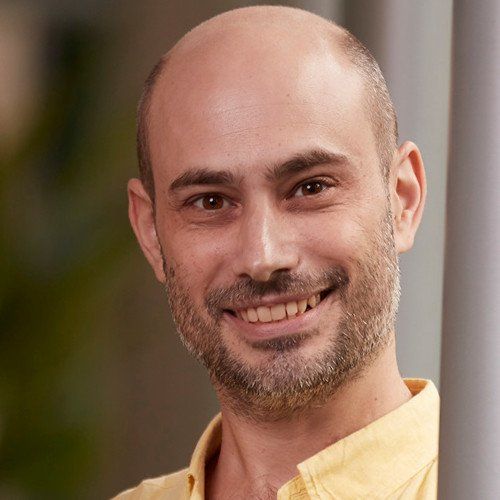The Two Faces of Leadership

It’s not only what leaders do in the spotlight that counts. Great leaders also know how to manage the organisational machinery behind the scenes.
Leadership has two faces: one highly visible, one less so.
The first face is heroic. It’s what leaders use to inspire and motivate, role-model behaviour and express an enthralling vision.
The second is more practical. It’s the face leaders assume behind the scenes as they preside over the processes that keep the organisation running smoothly.
For their plans to succeed, leaders must face in both directions at once. The problem is that as leadership development ballooned into a global US$366 billion industry, it has fixated on the public face at the expense of the process-oriented one. Leadership is a hotter topic than ever, but its popular image only brings half the picture into focus.
“The constructs we focus on are things like emotional intelligence, and tenacity, and empowering people, and energising and so on,” said *Charles Galunic, INSEAD Professor of Organisational Behaviour, in a recent conversation for the INSEAD Knowledge podcast.
We’ve given people lots of mirrors, which I think is great. But I think leaders could use more windows. I think they need more visibility on the things that are happening around them and the processes they have to manage.
His new book, Backstage Leadership: The Invisible Work of Highly Effective Leaders, shows leaders the ropes and riggings of organisational strategy. It distils the heavy lifting that star leaders do in the background of their organisation into five processes: scanning and sensemaking, building and locking in commitment, handling contradictions, harnessing culture, and developing talent and capabilities.
Components of backstage leadership
You might be interested in: These 5 Tips Could Be Hurting Your Leadership
The backstage of Covid-19
Of course, Backstage Leadership was written before the Covid-19 pandemic, but Galunic believes many of the issues covered in the book are even more relevant now. The crisis has elevated the importance of sensemaking, he says, because “people are badly struggling with ambiguity and uncertainty…They need leaders who provide meaning, depth of understanding, better questions and some inspiring directions. These are the foundations of hope, and sensemaking is grounded hope.”
Also, managing contradictions has become even more difficult and urgent. In particular, Galunic stresses the perennial tension between exploration and exploitation. A leader’s first inclination, given the alarming economic outlook, may be to pivot toward efficiencies, but “if it’s at the total abandonment of exploratory and inventive work, they may survive in the short run but not the medium run, or become irrelevant”.
Backstage heroes
Galunic singled out three high-achieving leaders who have shown an exceptional ability to work seamlessly across frontstage and backstage.
New Zealand’s widely praised prime minister Jacinda Ardern wins Galunic’s admiration for the way she responded to Covid-19 and the 2019 Christchurch mosque shootings in which 51 people lost their lives. Her blend of empathy and bracing clarity (both moral and factual) reflects not only authentic humanity but also confident command of the information and resources at her disposal.
Former Pepsi CEO Indra Nooyi adroitly crossed frontstage and backstage as she shepherded the company through a restructuring initiative that she dubbed ‘Performance with Purpose’. In the mid-2000s, her vision of an environmentally responsible Pepsi with a ‘positive nutrition’ products division seemed off-brand, if not wildly incongruous to some – but Nooyi’s timing was in fact brilliant. In anticipating rising health-conscious consumer trends, Nooyi displayed refined sensemaking skills. She also played the role of frontstage leader to the hilt as a credible and infectiously passionate spokesperson.
Microsoft CEO Satya Nadella orchestrated a mighty turnaround since his appointment in 2014. In public, he often said all the right things, precisely calibrating his message of change for maximum investor and stakeholder impact. He backed up his words by building much-needed capacities behind the scenes, such as ending Microsoft’s infamous ‘forced ranking’ system of grading employees on the curve, re-imagining the leadership team as a cross-functional entity and taking the vulnerable step of inviting customer feedback on evolving ideas via a digital forum.
Read: COVID-19 Is a Test for Leadership
Challenges of Covid-19
So what are Galunic’s recommendations for leaders grappling with the challenges of Covid-19? “It’s going to go beyond just Covid. It’s not as though our times were calm before. We used to talk about disruption. It meant something a little bit different a year ago, but it was still challenging times. And companies were still facing existential questions.”
“And when it comes to existential questions, ultimately they need to turn to their core backstage institutions to provide them pathways out of the mess.”
*Charles Galunic is a Professor of Organisational Behaviour and the Aviva Chaired Professor of Leadership and Responsibility at INSEAD. His latest book, Backstage Leadership: The Invisible Work of Highly Effective Leaders, is now available on Palgrave Macmillan, Amazon and the Apple Bookstore.
Benjamin Kessler is Managing Editor of INSEAD Knowledge.
This article is republished courtesy of INSEAD Knowledge. Copyright INSEAD 2020.
Leadership
Tags: Emerging Leadership
Benjamin Kessler is Managing Editor of INSEAD Knowledge.






